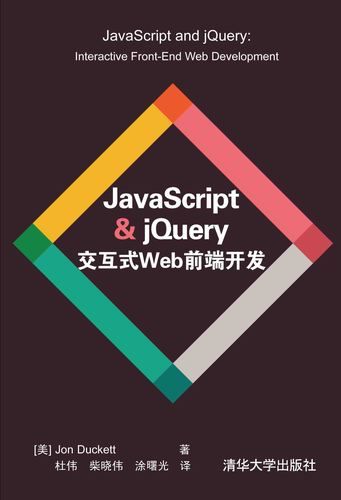
1. Webpack基本概念
目标: webpack本身是, node的一个第三方模块包, 用于打包代码
2.Webpack能做什么
把很多文件打包整合到一起, 缩小项目体积, 提高加载速度
3.Webpack的官方解释
从本质上来讲,webpack是一个现在的javascript应用的静态模块化打包工具。(从两点概括这句话即模块和打包)
4.我写了一个后台管理的一个系统现在来进行一下项目的优化
- 生成打包报告
- 第三方库启用CDN
- Element-UI组件按需加载
- 路由懒加载
- 首页的内容优化
5.首先就是在项目的顶部会有一个进度条
- 安装 npm i --save nprogress
我是在vue ui 可视化中安装的
- 在Vscode终端中输入 vue ui 进入Vue CLI
- 找到左侧依赖,然后点击右上角的安装依赖
- 进入运行依赖,输入nprogress
- 点击选中以后滑到底部点击安装
使用nprogress
- 在项目中的main.js导入nprogress
- import NProgress from ‘nprogress’
- import ‘nprogress/nprogress.css’
- 在request拦截器中使用NProgress.start(),展示进度条
- 在response拦截器中使用NProgress.done(),隐藏进度条
删除项目中的console.log(),只是在发布后删除,开发的时候不进行操作
同上进入依赖,不过这次是进入开发依赖,然后点击最下方的安装
在项目中找到 babel.config.js 文件
"plugins": [
[
"***ponent",
{
"libraryName": "element-ui",
"styleLibraryName": "theme-chalk"
}
],
// 引入去除console.log()
'transform-remove-consile'
]
完成,运行项目
只在发布阶段去移除console.log(),还是在 babel.config.js 文件
开发阶段
发布阶段
// 这是项目发布阶段需要要用到的babel插件
const prodPlugins = []
// 判断当前是开发阶段还是发布阶段
if(process.env.NODE_ENV === 'production') {
prodPlugins.push('transform-remove-console')
}
module.exports = {
"presets": [
"@vue/cli-plugin-babel/preset"
],
"plugins": [
[
"***ponent",
{
"libraryName": "element-ui",
"styleLibraryName": "theme-chalk"
}
],
// 发布产品时候的插件数组
...prodPlugins,
'@babel/plugin-syntax-dynamic-import'
]
}
修改完以后要从新去运行项目
生成打包报告
使用第二种方式
通过 vue.config.js 修改 Webpack默认的配置,如果没有这个文件可以手动创建(在根目录中创建)
module.exports = defineConfig{
}
为开发模式与发布模式指定不同的打包入口
默认情况下,Vue项目的开发模式与发布模式,共用同一个打包的入口文件(即src/main.js)。为了将项目的开发过程与发布过程分离,我们可以为两种模式,各自指定打包入口文件:
1.开发模式的入口文件为scr/main-dev.js
2.发布模式的入口文件为src/main-prod.js
configureWebpack和chainWebpack
在 vue.config.js 导出的配置对象中,新增configureWebpack或chainWebpack节点来定义webpack的打包配置
在这里,configureWebpack和chainWebpack的作用相同,唯一的区别就是它们修改webpack配置的方法不同:
1.chainWebpack 通过链式编程的形式,来修改默认的webpack配置
2.configureWebpack 通过操作对象的形式,来修改默认的webpack配置
通过chainWebpack自定义打包入口 (vue.config.js 文件)
1.首先把main.js删除或者更换名称main-dev.js
2.把main-dev.js中的内容复制一份在src目录下新建一个main-prod.js把复制的内容粘贴进去
3.进入 vue.config.js 文件
module.exports = defineConfig{
chainWebpack: (config) => {
// 发布模式
config.when(process.env.NODE_ENV === 'production', (config) => {
config.entry('app').clear().add('./src/main-prod.js')
})
// 开发模式
config.when(process.env.NODE_ENV === 'development', (config) => {
config.entry('app').clear().add('./src/main-dev.js')
})
}
}
运行项目
通过externals加载外部CDN资源
module.exports = defineConfig{
chainWebpack: (config) => {
// 发布模式
config.when(process.env.NODE_ENV === 'production', (config) => {
config.entry('app').clear().add('./src/main-prod.js')
config.set('externals', {
vue: 'Vue',
'vue-router': 'VueRouter',
axios: 'axios',
lodash: '_',
echarts: 'echarts',
nprogress: 'NProgress',
'vue-quill-editor': 'VueQuillEditor'
})
})
// 开发模式
config.when(process.env.NODE_ENV === 'development', (config) => {
config.entry('app').clear().add('./src/main-dev.js')
})
}
}
通过externals加载外部CDN资源
需要在public/index.html文件的头部,添加CDN资源
首先要先把main-prod.js中的相关内容删掉
以.css为点缀的删除
进入public/index.html文件
<!-- nprogress 的样式表文件 -->
<link rel="stylesheet" href="https://cdn.staticfile.org/nprogress/0.2.0/nprogress.min.css" />
<!-- 富文本编辑器 的样式表文件 -->
<link rel="stylesheet" href="https://cdn.staticfile.org/quill/1.3.4/quill.core.min.css" />
<link rel="stylesheet" href="https://cdn.staticfile.org/quill/1.3.4/quill.snow.min.css" />
<link rel="stylesheet" href="https://cdn.staticfile.org/quill/1.3.4/quill.bubble.min.css" />
<script src="https://cdn.staticfile.org/vue/2.5.22/vue.min.js"></script>
<script src="https://cdn.staticfile.org/vue-router/3.0.1/vue-router.min.js"></script>
<script src="https://cdn.staticfile.org/axios/0.18.0/axios.min.js"></script>
<script src="https://cdn.staticfile.org/lodash.js/4.17.11/lodash.min.js"></script>
<script src="https://cdn.staticfile.org/echarts/4.1.0/echarts.min.js"></script>
<script src="https://cdn.staticfile.org/nprogress/0.2.0/nprogress.min.js"></script>
<!-- 富文本编辑器的 js 文件 -->
<script src="https://cdn.staticfile.org/quill/1.3.4/quill.min.js"></script>
<script src="https://cdn.jsdelivr.***/npm/vue-quill-editor@3.0.4/dist/vue-quill-editor.js"></script>
通过CDN优化ElementUI的打包
虽然在开发阶段,我们启用了 element-ui 组件的按需加载,尽可能的减少了打包的体积,但是那些被按需加的组件,还是占用了较大的文件体积。此时,我们可以将element-ui 中的组件,也通过 CDN 的形式来加载,这样能够进一步减小打包后的文件体积。
具体操作流程如下:
1.在 main-prodjs 中,注释掉 element-ui按需加载的代码
2.在index.html的头部区域中,通过CDN 加载element-ui的js和css 样式
<!-- element-ui 的样式表文件 -->
<link rel="stylesheet" href="https://cdn.staticfile.org/element-ui/2.4.5/theme-chalk/index.css" />
<!-- nprogress 的样式表文件 -->
<link rel="stylesheet" href="https://cdn.staticfile.org/nprogress/0.2.0/nprogress.min.css" />
<!-- 富文本编辑器 的样式表文件 -->
<link rel="stylesheet" href="https://cdn.staticfile.org/quill/1.3.4/quill.core.min.css" />
<link rel="stylesheet" href="https://cdn.staticfile.org/quill/1.3.4/quill.snow.min.css" />
<link rel="stylesheet" href="https://cdn.staticfile.org/quill/1.3.4/quill.bubble.min.css" />
<script src="https://cdn.staticfile.org/vue/2.5.22/vue.min.js"></script>
<script src="https://cdn.staticfile.org/vue-router/3.0.1/vue-router.min.js"></script>
<script src="https://cdn.staticfile.org/axios/0.18.0/axios.min.js"></script>
<script src="https://cdn.staticfile.org/lodash.js/4.17.11/lodash.min.js"></script>
<script src="https://cdn.staticfile.org/echarts/4.1.0/echarts.min.js"></script>
<script src="https://cdn.staticfile.org/nprogress/0.2.0/nprogress.min.js"></script>
<!-- 富文本编辑器的 js 文件 -->
<script src="https://cdn.staticfile.org/quill/1.3.4/quill.min.js"></script>
<script src="https://cdn.jsdelivr.***/npm/vue-quill-editor@3.0.4/dist/vue-quill-editor.js"></script>
<!-- element-ui 的 js 文件 -->
<script src="https://cdn.staticfile.org/element-ui/2.4.5/index.js"></script>
路由懒加载
当打包构建项目时,JavaScript 包会变得非常大,影响页面加载。如果我们能把不同路由对应的组件分割成不同的代码块,然后当路由被访问的时候才加载对应组件,这样就更加高效了。
具体需要 3 步:
1.安装@babel/plugin-syntax-dynamic-import 包
2.在 babel.configjs 配置文件中声明该插件
// 这是项目发布阶段需要要用到的babel插件
const prodPlugins = []
if(process.env.NODE_ENV === 'production') {
prodPlugins.push('transform-remove-console')
}
module.exports = {
"presets": [
"@vue/cli-plugin-babel/preset"
],
"plugins": [
[
"***ponent",
{
"libraryName": "element-ui",
"styleLibraryName": "theme-chalk"
}
],
// 发布产品时候的插件数组
...prodPlugins,
// 路由懒加载
'@babel/plugin-syntax-dynamic-import'
]
}
3.将路由改为按需加载的形式,示例代码如下:
import Vue from 'vue'
import VueRouter from 'vue-router'
// import Login from '../***ponents/Login.vue'
const Login = () => import(/*webpackChunkName: "Login_Home_Wel***e" */ '../***ponents/Login.vue')
// import Home from '../***ponents/Home.vue'
const Home = () => import(/*webpackChunkName: "Login_Home_Wel***e" */ '../***ponents/Home.vue')
// import Wel***e from '../***ponents/Wel***e.vue'
const Wel***e = () => import(/*webpackChunkName: "Login_Home_Wel***e" */ '../***ponents/Wel***e.vue')
// import Users from '../***ponents/user/User.vue'
const Users = () => import(/*webpackChunkName: "Users_Rights_Roles" */ '../***ponents/user/User.vue')
// import Rights from '../***ponents/power/Rights.vue'
const Rights = () => import(/*webpackChunkName: "Users_Rights_Roles" */ '../***ponents/power/Rights.vue')
// import Roles from '../***ponents/power/Roles.vue'
const Roles = () => import(/*webpackChunkName: "Users_Rights_Roles" */ '../***ponents/power/Roles.vue')
// import Categories from '../***ponents/goods/Cate.vue'
const Categories = () => import(/*webpackChunkName: "Categories_Params" */ '../***ponents/goods/Cate.vue')
// import Params from '../***ponents/goods/Params.vue'
const Params = () => import(/*webpackChunkName: "Categories_Params" */ '../***ponents/goods/Params.vue')
// import Goods from '../***ponents/goods/List.vue'
const Goods = () => import(/*webpackChunkName: "Goods_Add_Edit" */ '../***ponents/goods/List.vue')
// import Add from '../***ponents/goods/Add.vue'
const Add = () => import(/*webpackChunkName: "Goods_Add_Edit" */ '../***ponents/goods/Add.vue')
// import Edit from '../***ponents/goods/Edit.vue'
const Edit = () => import(/*webpackChunkName: "Goods_Add_Edit" */ '../***ponents/goods/Edit.vue')
// import Orders from '../***ponents/order/order.vue'
const Orders = () => import(/*webpackChunkName: "Orders_Reports" */ '../***ponents/order/order.vue')
// import Reports from '../***ponents/report/Report.vue'
const Reports = () => import(/*webpackChunkName: "Orders_Reports" */ '../***ponents/report/Report.vue')
Vue.use(VueRouter)
const routes = [
{
path: '/',
redirect: '/login'
},
{
path: '/login',
name: 'login',
***ponent: Login
},
{
path: '/home',
name: 'home',
redirect: '/wel***e',
***ponent: Home,
children: [
{
path: '/wel***e',
name: 'wel***e',
***ponent: Wel***e
},
{
path: '/users',
name: 'user',
***ponent: Users
},
{
path: '/rights',
name: 'rights',
***ponent: Rights
},
{
path: '/roles',
name: 'roles',
***ponent: Roles
},
{
path: '/categories',
name: 'categories',
***ponent: Categories
},
{
path: '/params',
name: 'params',
***ponent: Params
},
{
path: '/goods',
name: 'goods',
***ponent: Goods
},
{
path: '/goods/add',
name: 'add',
***ponent: Add
},
{
path: '/orders',
name: 'orders',
***ponent: Orders
},
{
path: '/reports',
name: 'report',
***ponent: Reports
},
{
path: '/goods/edit/:id',
name: 'edit',
***ponent: Edit
}
]
}
]
const router = new VueRouter({
routes
})
export default router
项目上线
创建一个文件夹
1.npm init -y
2.npm i
3.创建一个app.js
4.安装一个 npm i express -S
5.将我们打包生成的dist复制到新创建的文件夹中
const express = require('express')
const app = express()
app.use(express.static('./dist'))
app.listen(1314, () => {
console.log('server running at http://127.0.0.1:1314');
})

